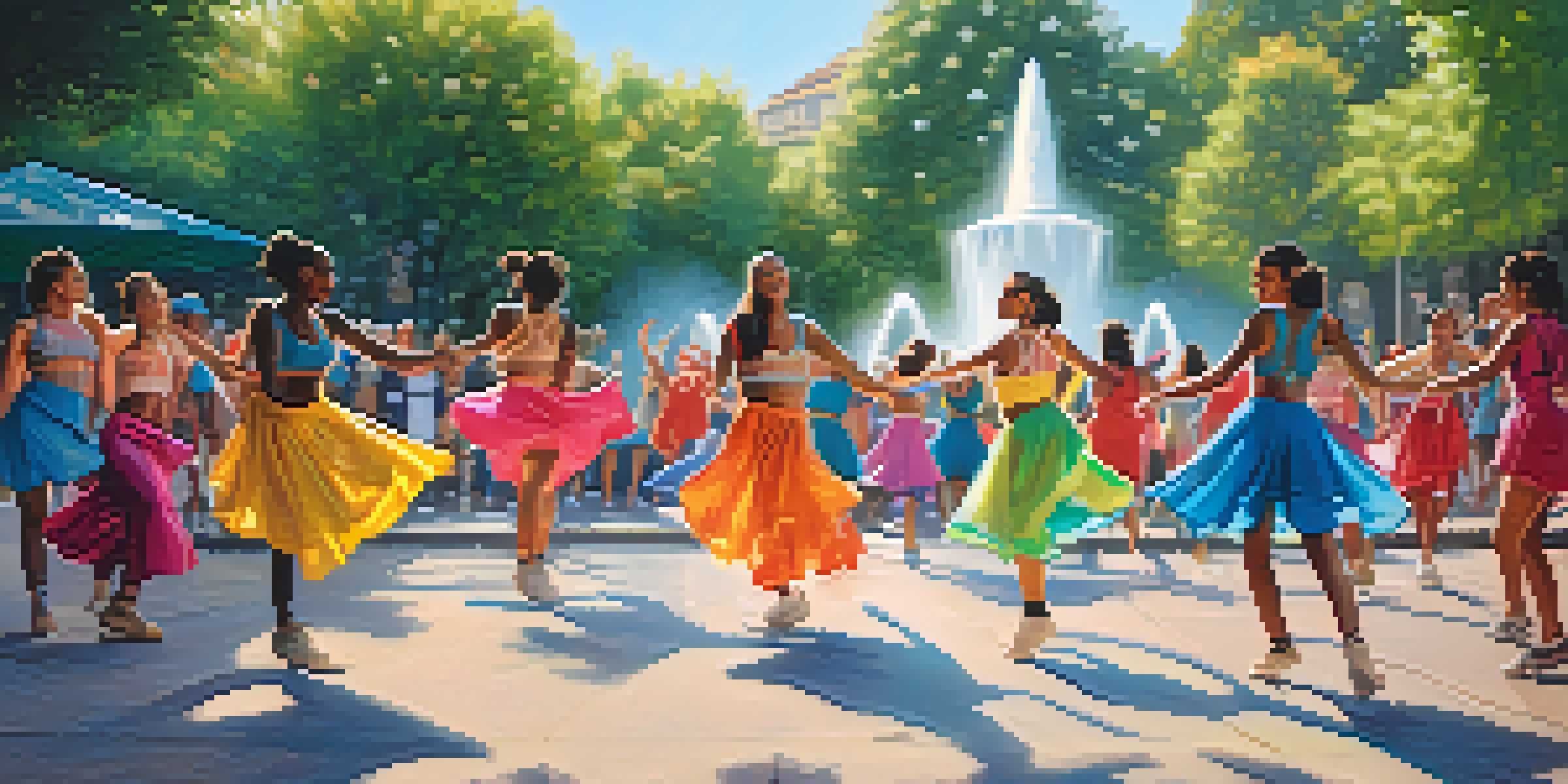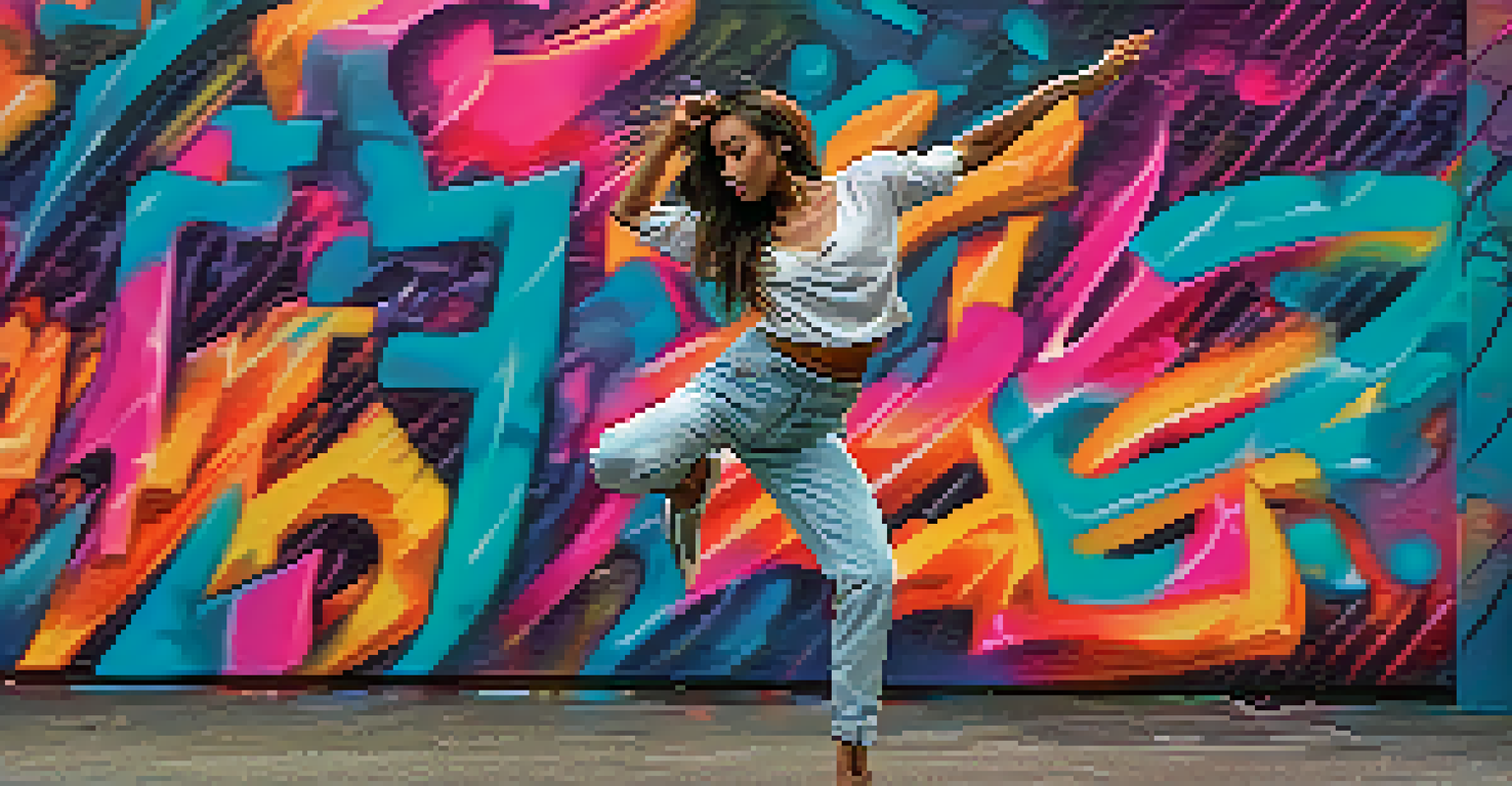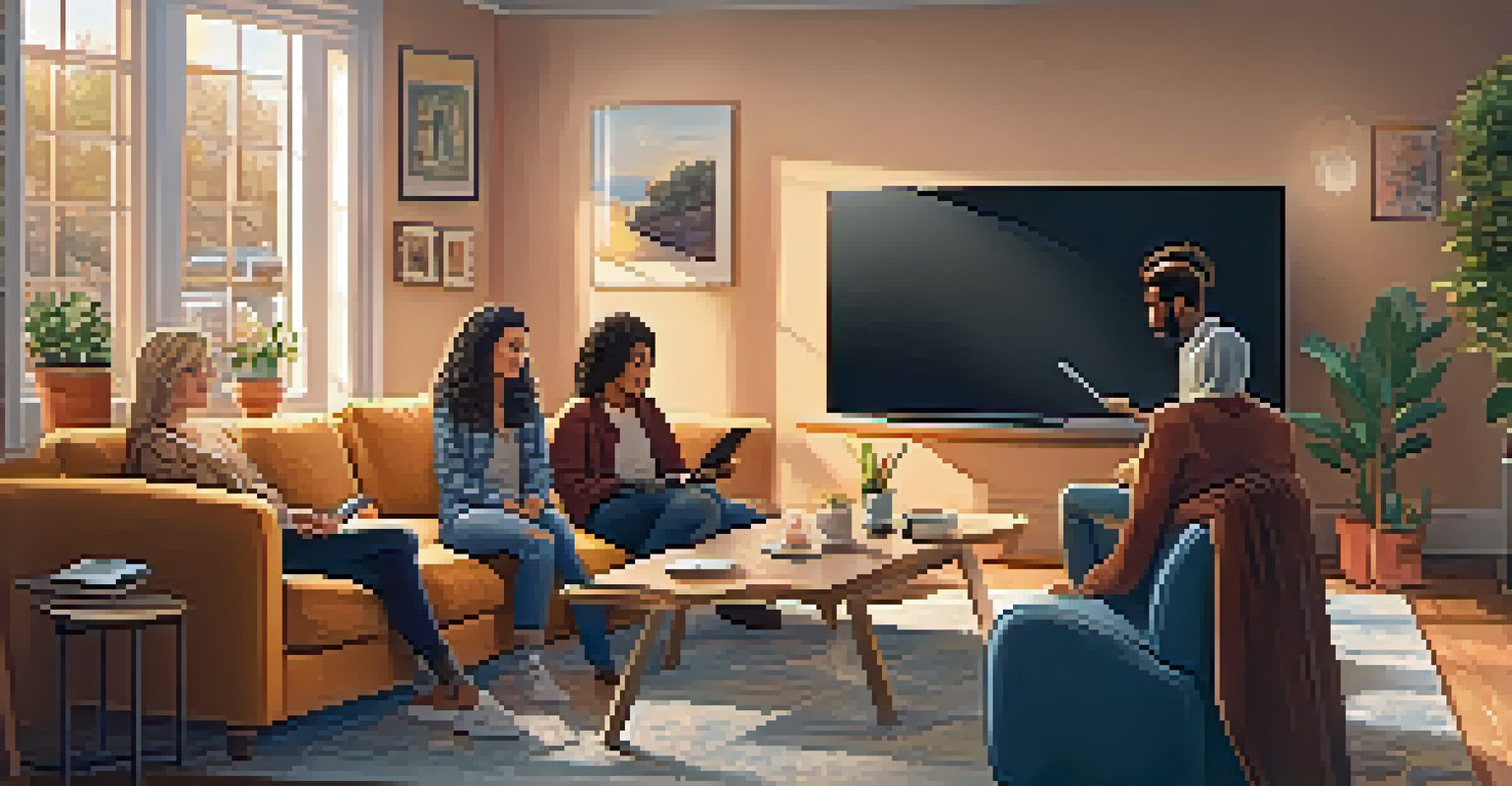The Influence of Social Media on Dance Trends in Film and TV

The Rise of Social Media and Its Cultural Impact
Social media has transformed the way we interact with culture, and dance is no exception. Platforms like TikTok, Instagram, and YouTube have become stages where dance trends are born and spread like wildfire. These platforms allow everyday users to showcase their moves, creating a sense of community around dance that transcends geographical boundaries.
Dance is the hidden language of the soul.
As a result, when a new dance move goes viral, it isn't just a trend; it's a phenomenon that can influence choreographers and filmmakers alike. Think of how quickly the 'Renegade' dance captivated audiences and prompted its inclusion in various TV shows and movies. This shift illustrates how social media has democratized dance, giving everyone a chance to participate in and influence trends.
Moreover, this cultural exchange fosters creativity and innovation in dance. Choreographers now draw inspiration from the latest viral dances, blending styles and techniques that resonate with a younger audience. This dynamic interaction between social media and dance has reshaped the expectations of what we see on screen, making it more relatable and exciting.
TikTok: A Catalyst for Dance Trends
TikTok has emerged as a major player in shaping dance trends, often dictating what becomes popular in film and TV. Short, catchy clips encourage users to create and share their own interpretations of popular dances, leading to a rapid cycle of trends. This platform has made it possible for even the most niche dance styles to gain mainstream attention almost overnight.

For instance, dances created for songs by artists like Doja Cat and Megan Thee Stallion have not only gone viral but have also been incorporated into major performances and award shows. This symbiotic relationship between TikTok and the entertainment industry highlights how social media can elevate a song and its accompanying dance into cultural staples.
Social Media Shapes Dance Trends
Platforms like TikTok and Instagram have revolutionized how dance trends emerge and spread, creating a global community of dancers.
Additionally, the platform has opened doors for aspiring dancers and choreographers to showcase their work, often leading to opportunities in film and television. The visibility gained through TikTok can lead to collaborations with artists and even roles in productions, making it a critical tool for those looking to break into the industry.
Instagram's Influence on Dance and Aesthetics
Instagram has long been a hub for dancers and choreographers to share their artistry, influencing how dance is perceived in visual media. The platform’s focus on aesthetics encourages users to create visually stunning content, which often translates into choreographed pieces that prioritize style and presentation. This emphasis can lead to a fusion of dance with fashion and art, making performances more engaging.
Social media is about the people! Not about your business. Provide for the people and the people will provide you.
Dance challenges on Instagram also contribute to the fast-paced nature of trends. Users often put their unique spin on popular moves, creating a ripple effect that influences not just what people dance to, but how they dance. This has led to a more diverse array of dance styles being represented in film and television, broadening the scope of what audiences can expect to see.
Furthermore, Instagram's Stories and Reels features allow for behind-the-scenes glimpses into the creative process, fostering a deeper connection between dancers and their audience. This transparency not only humanizes choreographers but also inspires budding dancers to express themselves, fueling a continuous cycle of creativity and trend evolution.
YouTube and the Evolution of Dance Tutorials
YouTube has revolutionized the way people learn dance, making tutorials accessible to anyone with an internet connection. This shift has democratized dance education, allowing individuals to learn trending moves at their own pace. As a result, popular dances often see a surge in interest as users flock to view and replicate tutorial videos.
Many choreographers and dancers have leveraged YouTube to showcase their work, further blurring the lines between professional and amateur performance. This not only promotes individual dancers but also creates a platform for choreographers to share their unique styles and approaches, which can influence what gets featured in films and television.
Influencers Drive Dance Popularity
Social media influencers play a pivotal role in popularizing dance moves, often leading to their adoption in mainstream entertainment.
Moreover, the viral nature of YouTube content means that a dance can quickly go from a tutorial to a mainstream trend. As these dances are incorporated into popular media, they gain even more traction, leading to a feedback loop that continually shapes the landscape of dance in entertainment.
How Dance Trends Reflect Cultural Movements
Dance trends often serve as a reflection of broader cultural movements, with social media acting as a magnifying glass. For example, the resurgence of styles like the Charleston or the Floss can be seen as a nod to nostalgia and the desire for connection in our digital age. These trends not only entertain but also foster a sense of community and shared experiences.
Furthermore, movements like Black Lives Matter have influenced dance by inspiring choreographers to create pieces that address social issues. This infusion of activism into dance showcases how social media can amplify voices and messages, leading to more meaningful representations in film and television. Dancers and choreographers are using their platforms to push for change, creating art that resonates on multiple levels.
As a result, we see dance becoming a powerful tool for storytelling in film and TV, where the choreography often conveys deeper narratives. This evolution not only enriches the viewing experience but also encourages audiences to engage with the cultural contexts behind the movements.
The Role of Influencers in Dance Trends
Influencers have become key players in shaping dance trends, often introducing new moves to their massive followings. Their ability to create buzz around a particular dance style can lead to widespread adoption on platforms like TikTok and Instagram. This phenomenon highlights the impact of social media personalities on the entertainment landscape, as their endorsements can propel a dance into mainstream media.
For instance, when a well-known influencer participates in a dance challenge, it often goes viral, prompting even more participation from their followers. This effect can significantly influence the choreography seen in film and TV, as creators look to tap into what’s popular and relevant among younger demographics.
Dance Reflects Cultural Movements
Dance trends serve as a reflection of cultural movements, with social media amplifying voices and messages that resonate on deeper levels.
Moreover, influencers often collaborate with choreographers and musicians, bridging the gap between social media and traditional entertainment. This collaboration not only enriches the dance community but also establishes a new standard for how dance is integrated into popular culture, emphasizing the importance of relatability and accessibility.
Looking Ahead: The Future of Dance in Film and TV
As social media continues to evolve, so too will the dance trends that shape film and TV. The rapid pace of content creation means that trends can shift overnight, making it essential for choreographers and filmmakers to stay attuned to what’s happening online. This creates exciting opportunities for innovation and collaboration across various platforms.
Moreover, we can expect to see an even greater emphasis on diversity in dance styles as social media gives a voice to underrepresented communities. This shift not only enriches the storytelling aspect of film and television but also reflects a broader societal movement towards inclusivity and representation.

In conclusion, social media has undeniably transformed the landscape of dance in film and TV, allowing for a dynamic exchange of ideas and styles. As we look to the future, the integration of social media trends will continue to shape how dance is portrayed, making it an exciting time for both creators and audiences alike.